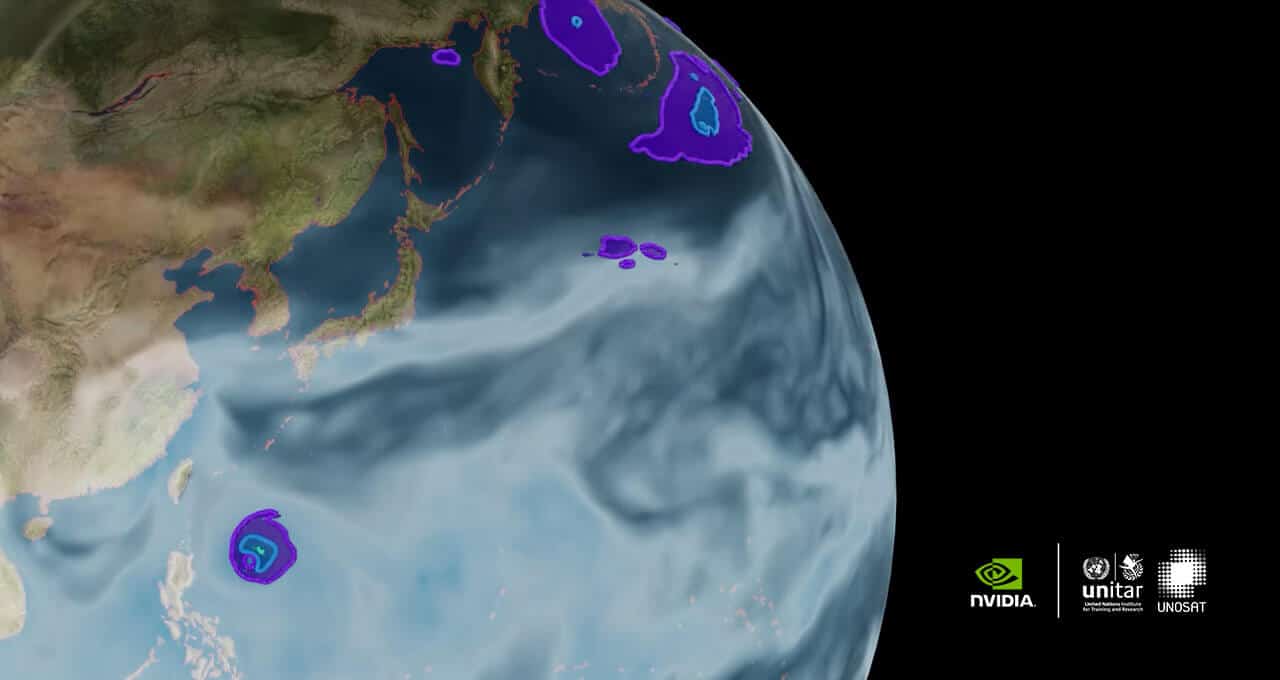The UN Satellite Center will use Nvidia's accelerated computing technologies that will improve the ability to analyze satellite images and enable better prediction of events such as floods, inundations and fires. The ability to analyze such events almost in real time will enable a quick response to the communities in the field, building resilience against climate events and developing sustainable policies for the long term

An extraordinary collaboration between Nvidia and the United Nations Satellite Center (UNOSAT) will allow the United Nations and the countries of the world to develop more accurate tools, based on artificial intelligence, to deal with the consequences of climate change such as floods, floods and other natural disasters.
As part of the collaboration, UNOSAT's satellite imagery infrastructure and analysis tools will be enhanced with NVIDIA DGX systems for training deep learning models, as well as with NVIDIA JETSON systems for analyzing and formulating insights and drawing conclusions in the end units (that collect the data). In this way, researchers will be able to improve the ability to collect and analyze geospatial information (satellite images and other layers of information), and provide near-real-time insights into floods, fires and other natural disasters related to climate change. According to estimates, the integration of Nvidia's technologies into UNOSAT's infrastructure will make it possible to accelerate the detection of flooding events 7 times, and also to cover larger areas with greater accuracy.
About 40% of the world's population today lives near the coasts and as a result the lives of about 2.2 billion people have been affected by floods and the damage caused is estimated at about 40 billion dollars every year. The UN sees remote flood forecasting with the help of models and sensors as a tool to deal with this challenge.
UNOSAT already operates computer vision and satellite image analysis tools to obtain accurate information about disasters and complex emergencies, enabling researchers to assess damage from tropical storms or gauge the extent of the impact of volcanic eruptions. But near-real-time analysis is the key that turns the research insights into tasks for immediate execution for the humanitarian response teams in the field.
In addition, UNOSAT developed technological tools that integrate with the online courses within the framework of DLI (NVIDIA Deep Learning Institute). The tools will allow researchers to build deep learning models that enable the automation of flood event detection.
This is Nvidia's first course focused on tools for developing climate immunity and the company is planning a series of similar courses, focused on climate action for the global community of researchers and developers. The courses, offered free of charge, are designed to support the application of deep learning methods to create accurate flood detection models, improve the skills of data scientists, and harness accelerated computing and deep learning resources to predict and respond to climate-related disasters.
"Working with Nvidia will allow us to close the loop from artificial intelligence research to the implementation of climate solutions in the shortest possible time, and ensure that vulnerable populations can benefit from the technology," said Einar Birgo, Director of UNOSAT.
"Anvidia and UNOSAT have a unique opportunity to combat the impact of climate change and advance the UN's Sustainable Development Goals. Our launch pad aims to train data scientists on how to develop and deploy GPU-accelerated models that improve flood forecasting. Our long-term goal is to democratize access to accelerated computing to help countries run more accurate deep learning models that better predict and respond to a broad spectrum of humanitarian and natural disasters, said Keith Strayer, vice president of global AI initiatives at Nvidia.
The new technological tools will also allow the countries of the world to formulate sustainable development policies and climate resilience - tools and changes in the field that reduce the effects of natural disasters on the environment and communities around the world, which will help prevent climate events from turning into humanitarian disasters. In this way, the countries will be able to meet the sustainable development goals of the United Nations (SDG).
The 17 UN Sustainable Development Goals (SDG) are on the UN's 2030 agenda and serve as calls to action for all member states to support global well-being. The United Nations believes that humanity's greatest challenges are interrelated - ending poverty, for example, is related to improving health and education, which depends on reducing inequality, which requires climate action to maintain a healthy planet.
More of the topic in Hayadan:
